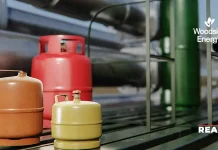EPFL researchers have built a pilot-scale solar reactor that produces usable heat and oxygen, in addition to generating hydrogen with unprecedented efficiency for its size.
The work builds on preliminary research demonstrating the concept on the laboratory scale, using LRESE’s high-flux solar simulator, which was published in Nature Energyin 2019. Now, the team has published the results of their scaled-up, efficient, and multi-product process under real-world conditions in an open-access paper in the same journal.
After the dish concentrates the sun’s rays, water is pumped into its focus spot, where an integrated photoelectrochemical reactor is housed. Within this reactor, photoelectrochemical cells use solar energy to split water molecules into hydrogen and oxygen. Heat is also generated, but instead of being released as a system loss, this heat is passed through a heat exchanger so that it can be harnessed—for ambient heating, for example.
In addition to the system’s primary outputs of hydrogen and heat, the oxygen molecules released by the photo-electrolysis reaction are also recovered and used, for example, in medical applications, Haussener says.
Also Read: Fluor Joint Venture Awarded U.S. Department of Energy Hanford Integrated Tank Disposition Contract
The system is suitable for industrial, commercial, and residential applications; LRESE-spinoff SoHHytec SA is already deploying and commercializing it. The EPFL start-up is working with a Swiss-based metal production facility to build a demonstration plant at the multi-100-kilowatt scale that will produce hydrogen for metal annealing processes, oxygen for nearby hospitals, and heat for the factory’s hot-water needs.
The system could be used to provide residential and commercial central heating and hot water, and to power hydrogen fuel cells. At an output level of about half a kilogram of solar hydrogen per day, the EPFL campus system could power around 1.5 hydrogen fuel cell vehicles driving an average annual distance; or meet up to half the electricity demand and more than half of the annual heat demand of a typical four-person Swiss household.
With the artificial photosynthesis system well on its way to scale-up, Haussener is already exploring new technological avenues. In particular, the lab is working on a large-scale solar-powered system that would split carbon dioxide instead of water, yielding useful materials such as syngas for liquid fuel, or the green plastic precursor ethylene.
SOURCE: Green Car Congress




